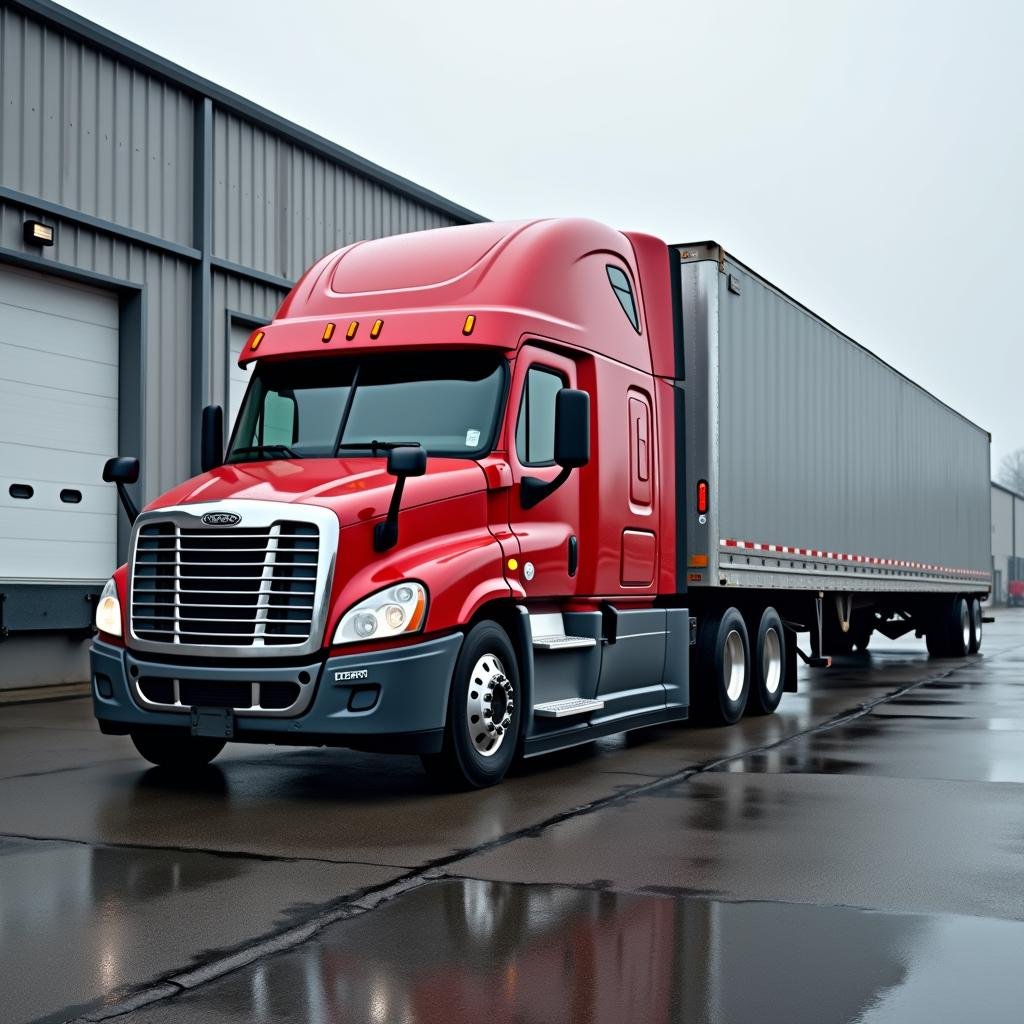Safety doesn’t happen by accident. In the trucking industry, where 18-wheelers share highways with family sedans and drivers log thousands of miles monthly, a robust safety culture isn’t just good business—it’s a moral imperative. Yet many trucking companies struggle to implement effective safety programs, especially when building from the ground up.
Developing a comprehensive trucking safety culture requires more than posting safety rules on break room walls or distributing handbooks that collect dust. It demands a fundamental shift in how your organization perceives, prioritizes, and practices safety across all operations. The good news? With the right approach to trucking safety culture development, you can create lasting change that protects your drivers, the public, and your bottom line.
This guide walks you through a strategic, step-by-step process to build a safety culture from scratch—one that becomes embedded in your company’s DNA rather than treated as a compliance checkbox.
Understanding the Foundation of Trucking Safety Culture
Before diving into implementation strategies, let’s clarify what a genuine safety culture looks like in the trucking industry.
A trucking safety culture is a set of shared attitudes, values, and practices regarding safety that permeates all levels of an organization. It’s not merely about following regulations but fostering an environment where safety becomes second nature—where drivers and staff make safe decisions even when no one is watching.
According to the Federal Motor Carrier Safety Administration (FMCSA), companies with strong safety cultures typically experience fewer accidents, reduced insurance premiums, better CSA scores, and higher driver retention rates. These benefits directly impact profitability, making safety culture development not just a regulatory necessity but a competitive advantage.
The most effective safety cultures share these core characteristics:
- Leadership commitment: Safety initiatives receive visible support from the top down
- Employee involvement: Drivers and staff actively participate in safety programs
- Continuous improvement: Safety processes evolve based on data and feedback
- Open communication: Safety concerns can be reported without fear of retaliation
- Learning orientation: Incidents become opportunities for organization-wide improvement
Laying the Groundwork: Leadership Buy-In and Safety Vision
The journey toward a robust trucking safety culture begins with committed leadership. Without genuine buy-in from company executives and management, safety initiatives often fizzle out or become perfunctory exercises.
Securing Executive Commitment
Start by helping leadership understand both the human and business cases for safety. Present data showing how safety performance correlates with operational metrics like driver turnover, insurance costs, and customer satisfaction. The National Safety Council estimates that workplace injuries and deaths cost the U.S. economy $171 billion annually, with transportation incidents representing a significant portion.
Once leadership is on board, formalize their commitment through:
- A written safety policy signed by top executives
- Regular safety discussions in executive meetings
- Allocation of adequate resources for safety programs
- Leadership participation in safety events and training
Developing a Clear Safety Vision
Work with your leadership team to craft a compelling safety vision that aligns with your company’s overall mission. This vision should be:
- Aspirational yet achievable: “To become the industry leader in safe transportation”
- Specific to trucking operations: “Zero preventable accidents across our fleet”
- Meaningful to all employees: “Everyone returns home safely, every day”
This vision becomes your north star, guiding all subsequent safety decisions and initiatives. It should be communicated consistently and prominently throughout your organization.
Building Your Safety Infrastructure
With leadership commitment secured and a vision established, it’s time to create the structural elements that will support your trucking safety culture.
Appointing Safety Champions
Identify and empower safety champions at various levels of your organization. These individuals will serve as the driving force behind your safety culture initiatives:
- Safety Director/Manager: Oversees the entire safety program and reports directly to executive leadership
- Safety Committee: Cross-functional team representing various departments (operations, maintenance, dispatch, drivers)
- Driver Safety Advocates: Experienced drivers who model safe behaviors and mentor others
Ensure these roles have clearly defined responsibilities and the authority to implement safety improvements. Provide them with the training and resources needed to succeed in championing your safety culture.
Establishing Safety Policies and Procedures
Develop comprehensive safety policies that address all aspects of your trucking operations. While standardization is important, avoid creating a one-size-fits-all approach that doesn’t account for the unique challenges faced by your fleet.
Your safety policy framework should include:
- Driver qualification and hiring standards
- Vehicle inspection and maintenance protocols
- Hours of service compliance procedures
- Accident response and investigation processes
- Substance abuse prevention policies
- Distracted driving prevention measures
- Weather and road condition safety guidelines
- Loading and cargo securement procedures
Document these policies in clear, accessible language. Avoid legal jargon that obscures meaning. Make safety materials available in multiple formats (digital, print) and languages as needed for your workforce.
Remember that effective trucking safety programs balance regulatory compliance with practical application. Drivers should understand not just what the rules are, but why they matter.
Implementing Effective Safety Training and Communication
The next phase in trucking safety culture development involves educating your team and establishing clear communication channels for safety matters.
Comprehensive Safety Training Programs
Safety training should be ongoing, engaging, and tailored to different learning styles. Consider implementing:
- Orientation training: Thorough safety introduction for new hires
- Regular refresher courses: Quarterly or biannual updates on core safety topics
- Specialized training: Focused sessions on specific challenges (mountain driving, hazardous materials, etc.)
- Remedial training: Targeted intervention after violations or near-misses
Leverage diverse training methods including classroom sessions, online modules, simulator training, and hands-on practice. This multi-modal approach accommodates different learning preferences and reinforces key concepts.
For maximum impact, incorporate real-world scenarios and actual company experiences into your training. Abstract safety concepts become much more meaningful when illustrated with relevant examples from your fleet’s history.
Creating Open Safety Communication Channels
For safety concerns to surface before they cause incidents, drivers and staff must feel comfortable reporting issues without fear of punishment. Establish multiple communication pathways:
- Anonymous reporting systems (digital and physical)
- Regular safety meetings with structured agendas
- One-on-one safety conversations between supervisors and drivers
- Digital communication platforms for immediate safety alerts
When safety concerns are reported, respond promptly and transparently. Nothing undermines a safety culture faster than reported hazards that remain unaddressed. Create a closed-loop system where reporters receive feedback on how their concerns were handled.
Consider implementing a safety hotline that drivers can call 24/7 if they encounter unsafe conditions or feel pressured to violate safety protocols. This resource can be particularly valuable for drivers facing difficult decisions while on the road.
Measuring and Reinforcing Your Safety Culture
A safety culture that isn’t measured can’t be effectively managed. Implementing robust metrics and reinforcement mechanisms ensures your safety initiatives maintain momentum and deliver measurable results.
Establishing Safety Metrics and Analytics
Develop a balanced scorecard of safety performance indicators that includes both:
- Lagging indicators: Historical measures of safety outcomes
- Accident frequency rates
- CSA scores
- Violation rates during roadside inspections
- Workers’ compensation claims
- Leading indicators: Predictive measures of safety performance
- Participation rates in safety meetings
- Completion of vehicle inspection reports
- Number of hazards reported and resolved
- Safety training completion rates
Track these metrics consistently and share the results throughout your organization. Use visual management tools like dashboards and scorecards to make safety performance transparent and immediately understandable.
Consider investing in telematics and electronic logging devices that go beyond compliance to provide actionable safety data. Modern fleet management systems can identify risky driving behaviors like harsh braking, rapid acceleration, and excessive speed before they result in accidents.
Recognition and Accountability Systems
Create balanced systems that both recognize excellent safety performance and address unsafe behaviors:
- Safety incentive programs: Reward drivers and teams for meeting or exceeding safety goals
- Safety bonuses tied to clean inspections
- Recognition programs for accident-free driving
- Team celebrations for safety milestones
- Accountability measures: Address safety violations consistently and fairly
- Progressive discipline policies for safety infractions
- Coaching and mentoring for drivers with safety concerns
- Clear consequences for willful safety violations
When designing recognition programs, be careful to reward the right behaviors. Poorly designed incentives can inadvertently encourage underreporting of incidents or create unhealthy competition between drivers. Focus on recognizing process adherence and proactive safety behaviors rather than just outcome metrics.
Evolving Your Safety Culture: Continuous Improvement
A truly effective trucking safety culture isn’t static—it continuously evolves based on new information, changing conditions, and lessons learned.
Learning from Incidents and Near-Misses
Implement a robust incident investigation process that focuses on systemic improvements rather than individual blame. When accidents or near-misses occur:
- Gather comprehensive data about what happened
- Analyze root causes using structured methodologies
- Develop corrective actions that address underlying issues
- Share lessons learned throughout the organization
- Follow up to ensure corrective actions are implemented and effective
Remember that near-misses (incidents that could have caused harm but didn’t) are valuable learning opportunities. Create a culture where near-misses are readily reported and treated as seriously as actual accidents.
Staying Current with Industry Best Practices
The transportation industry is constantly evolving, and your safety culture should evolve with it. Stay connected to the wider safety community through:
- Membership in industry associations like the American Trucking Associations’ Safety Management Council
- Participation in safety conferences and webinars
- Subscription to safety publications and research
- Networking with safety professionals from other transportation companies
Regularly benchmark your safety performance against industry standards and leading companies. This practice helps identify gaps in your program and opportunities for improvement.
Consider participating in voluntary safety initiatives like the FMCSA’s Safety Management System (SMS) or industry certification programs that go beyond basic compliance requirements.
Conclusion: Your Roadmap to Safety Excellence
Building a trucking safety culture from scratch is a journey, not a destination. It requires sustained commitment, strategic planning, and consistent execution across all levels of your organization. By following the framework outlined in this guide—securing leadership buy-in, establishing clear policies, implementing effective training, measuring performance, and committing to continuous improvement—you can create a safety culture that protects your people and enhances your business.
Remember that the most successful safety cultures make safe behavior the easiest and most natural choice for employees. When safety becomes “how we do things around here” rather than an additional burden, you’ll know your culture transformation is taking hold.
The investment in developing a strong trucking safety culture pays dividends far beyond regulatory compliance. It builds driver loyalty, enhances your reputation with customers and the public, reduces costs associated with accidents, and ultimately saves lives—perhaps the most important metric of all.
Ready to transform your trucking company’s approach to safety? Our team of transportation safety experts can help you develop and implement a customized safety culture program tailored to your specific operations. From initial assessment to full implementation, we provide the expertise and support you need to make safety excellence a competitive advantage.
Take the first step toward a stronger safety culture today. Fill out our consultation form, and let’s build a safer future for your drivers, your company, and everyone who shares the road.
Frequently Asked Questions About Trucking Safety Culture
How long does it typically take to establish a strong safety culture in a trucking company?
While you can implement basic safety programs within 3-6 months, developing a mature safety culture typically takes 18-24 months of consistent effort. The timeline varies based on company size, existing safety attitudes, leadership commitment, and available resources. Real cultural change happens gradually as new safety behaviors become habitual and embedded in daily operations.
What’s the biggest obstacle to creating an effective trucking safety culture?
The most common obstacle is resistance to change, particularly when safety measures are perceived as barriers to productivity or earnings. This resistance can come from any level—drivers concerned about miles driven, dispatchers focused on delivery schedules, or executives prioritizing short-term profits. Overcoming this obstacle requires clearly connecting safety to business success and demonstrating how safety practices support rather than hinder operational goals.
How can small trucking companies with limited resources develop a safety culture?
Small companies can build effective safety cultures by starting with high-impact, low-cost initiatives: regular safety meetings, peer-to-peer mentoring programs, and clear safety expectations. Leverage free resources from organizations like FMCSA and state trucking associations. Focus on leadership visibility—in small companies, owners and managers who consistently demonstrate safety commitment can influence culture significantly. As resources allow, gradually invest in more sophisticated training and technology solutions.
What role does technology play in developing a trucking safety culture?
Technology serves as a powerful enabler for safety culture when implemented thoughtfully. Modern tools like advanced telematics, AI-powered dash cams, and driver fatigue monitoring systems provide objective data that supports coaching and recognition. However, technology alone doesn’t create culture—it must be implemented with clear communication about how it supports safety rather than surveils drivers. The most successful implementations involve drivers in technology selection and focus on coaching rather than punishment.
How do you measure the return on investment (ROI) of safety culture initiatives?
Measuring safety ROI involves tracking both direct and indirect benefits. Direct financial returns include reduced insurance premiums, fewer accident-related costs, decreased workers’ compensation claims, and avoided regulatory fines. Indirect benefits include improved driver retention (reducing recruitment and training costs), enhanced company reputation, increased customer loyalty, and better operational efficiency. A comprehensive ROI calculation should also consider the avoided costs of serious accidents, which can reach millions of dollars per incident when accounting for all associated expenses.







